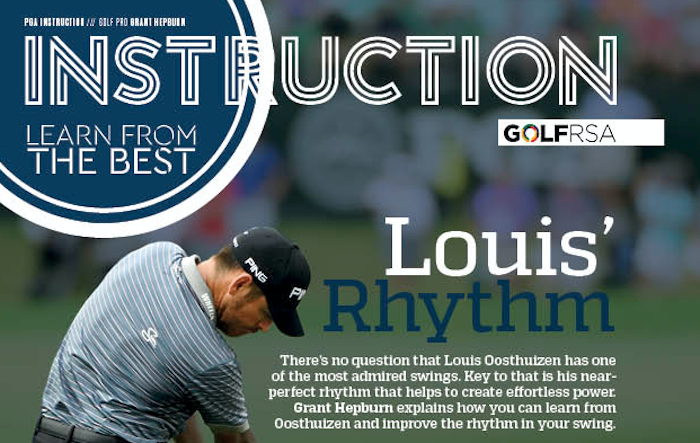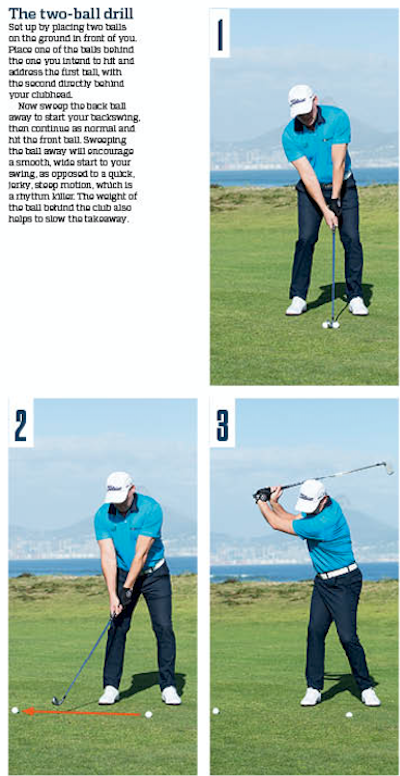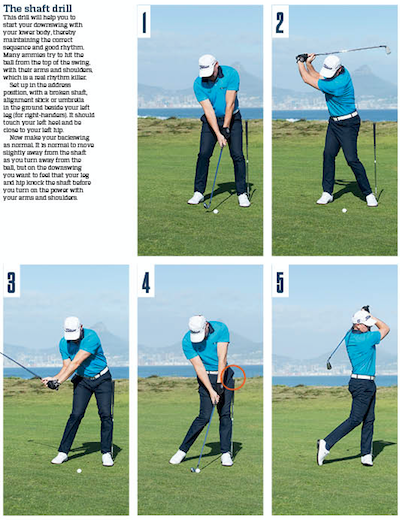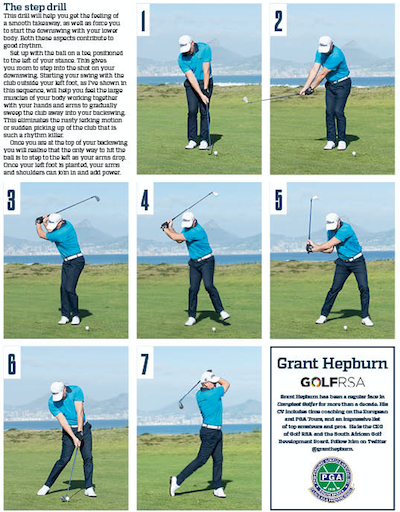There’s no question that Louis Oosthuizen has one of the most admired swings. Key to that is his near-perfect rhythm that helps to create effortless power. GRANT HEPBURN explains how you can learn from Oosthuizen and improve the rhythm in your swing.
Keeping good balance and maintaining a smooth rhythm are two important keys to consistency in your golf swing. When I think of rhythm in a golf swing I think of those players whose swings appear effortless – and Louis Oosthuizen is arguably the best example of perfect rhythm among the current players.
Good rhythm is hugely important as it allows you to properly sequence your swing and get to impact in a hugely powerful position.
I also find that even if your technique is not perfect, good rhythm can help save you from the dreadful, score-killing shots because it gives you time to make slight adjustments before you hit the ball.
There are two main areas where rhythm is thrown off. The first is at the beginning of the swing – the player’s takeaway – where they jerk the club back too quickly, perhaps in a nervous effort to get the shot over quickly, or in the mistaken belief that a quicker backswing helps deliver more power.
The other area where rhythm is often lost is in the transition from backswing to downswing. In these cases, you will find the player’s upper body and arms lunging at the ball – also in a frantic effort to create more power or get the shot over with.
Oosthuizen has a gorgeous, smooth start to his backswing, and his downswing transitions seamlessly.
It appears as though time slows down at the top of his swing, and then he gradually builds up speed on the downswing. It’s wonderfully natural-looking, and for me he owns the most elegantly powerful swing in the game.
A few months ago he explained the secret to his great rhythm in this magazine, saying, ‘I cannot emphasise enough that you can’t ever take the club back slowly enough. I see it so often in pro-ams, where players are quick on the backswing, and this kills all the rhythm. When I shift my weight from my left foot to my right foot on the take-back, I often count in my head: ‘‘One, settle, two, press, three, swing.’’ It allows for a great sense of flow.
‘Also, when you get to the top of your backswing, don’t rush your downswing. Take a pause at the top of your backswing, because if you get that part right, solid impact will happen almost automatically. Build speed slowly until you max out at impact.’
Here are three drills that will help you get your rhythm a little closer to that of Oosthuizen:
The two-ball drill
Set up by placing two balls on the ground in front of you. Place one of the balls behind the one you intend to hit and address the first ball, with the second directly behind your clubhead.
Now sweep the back ball away to start your backswing, then continue as normal and hit the front ball. Sweeping the ball away will encourage a smooth, wide start to your swing, as opposed to a quick, jerky, steep motion, which is a rhythm killer. The weight of the ball behind the club also helps to slow the takeaway.
The shaft drill
This drill will help you to start your downswing with your lower body, thereby maintaining the correct sequence and good rhythm. Many ammies try to hit the ball from the top of the swing, with their arms and shoulders, which is a real rhythm killer.
Set up in the address position, with a broken shaft, alignment stick or umbrella in the ground beside your left leg (for right-handers). It should touch your left heel and be close to your left hip.
Now make your backswing as normal. It is normal to move slightly away from the shaft as you turn away from the ball, but on the downswing you want to feel that your leg and hip knock the shaft before you turn on the power with your arms and shoulders.
The step drill
This drill will help you get the feeling of a smooth takeaway, as well as force you to start the downswing with your lower body. Both these aspects contribute to good rhythm.
Set up with the ball on a tee, positioned to the left of your stance. This gives you room to step into the shot on your downswing. Starting your swing with the club outside your left foot, as I’ve shown in this sequence, will help you feel the large muscles of your body working together with your hands and arms to gradually sweep the club away into your backswing. This eliminates the nasty jerking motion or sudden picking up of the club that is such a rhythm killer.
Once you are at the top of your backswing you will realise that the only way to hit the ball is to step to the left as your arms drop. Once your left foot is planted, your arms and shoulders can join in and add power.
*Grant Hepburn has been a regular face in Compleat Golfer for more than a decade. His CV includes time coaching on the European and PGA Tours, and an impressive list of top amateurs and pros. He is the CEO of Golf RSA and the South African Golf Development Board.
Follow him on Twitter @granthepburn











